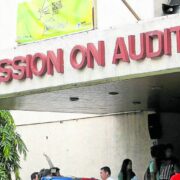PH gov’t debt seen topping P19T in ’26

The Philippine government’s debt burden is expected to breach the P19-trillion mark next year, as the Marcos administration turns to more borrowing to cover a persistent budget shortfall.
By the end of 2026, outstanding obligations are projected to reach P19.1 trillion, up from an estimated P17.4 trillion at the close of 2025, according to figures released on Wednesday by the Department of Budget and Management (DBM).
The government targets to borrow a total of P2.68 trillion from local and foreign lenders next year, up from the 2025 financing goal of P2.6 trillion. Treasury data showed the debt load already reached P17.27 trillion as of end-June.
The disclosure came as the agency submitted its proposed 2026 National Expenditure Program to Congress: a P6.793-trillion spending plan, equal to 22 percent of gross domestic product (GDP), and 7.4 percent higher than this year’s budget.
The proposal is expected to face close scrutiny, with President Marcos himself raising the specter of a budget deadlock if lawmakers produce a spending bill that strays from his administration’s priorities.
Broken down, domestic borrowings are set to account for nearly 70 percent of the total pile, with local debt projected to climb to P13.3 trillion by the end of next year. The government plans to raise P2.1 trillion from domestic creditors, largely through Treasury bonds and bills.
Foreign debt, meanwhile, is projected to rise to P5.8 trillion, budget documents showed.
Of that, P325 billion will come from concessional loans from development partners such as the World Bank and the Asian Development Bank, which offer low interest rates and favorable payment terms. The remaining P302.1 billion will be raised through commercial borrowings, including offshore bond sales.
Plugging the deficit
Overall, those new financing are needed to plug a budget hole amounting to P1.64 trillion in 2026, or 5.3 percent of GDP.
Fiscal planners say they will continue to favor onshore borrowing to limit exposure to foreign exchange risks. The Marcos administration has also made clear it is seeking an upgrade to an A-level credit rating, a distinction it hopes to achieve by keeping debt metrics in check while sustaining economic growth.
However, analysts at Japanese investment bank Nomura said the government has been slow to rein in its deficit, which stood at 39.6 percent of GDP before the pandemic in 2019. Figures showed government spending is seen hitting P6.63 trillion next year, outpacing the projected revenue haul of P4.98 trillion.

















